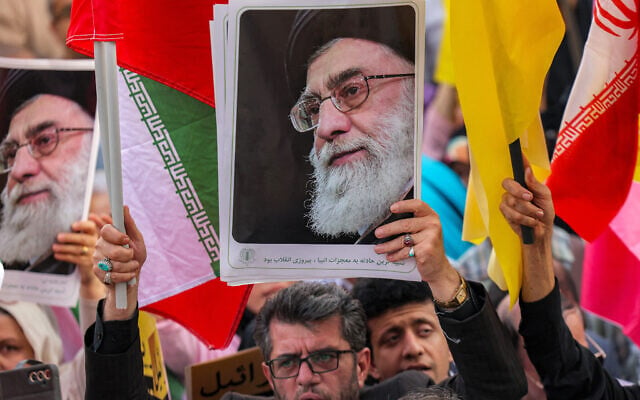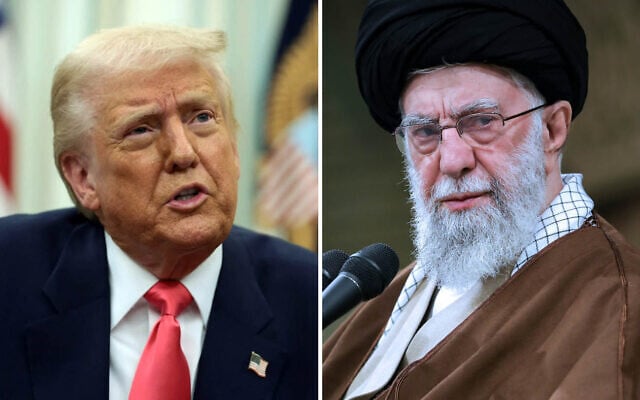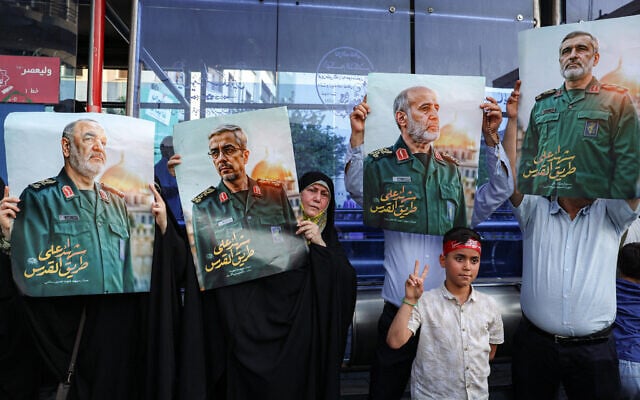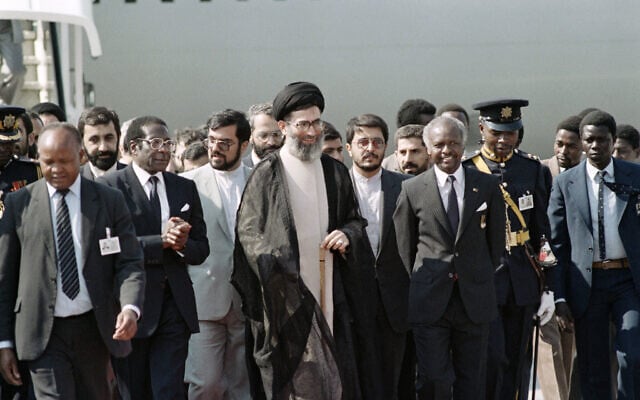


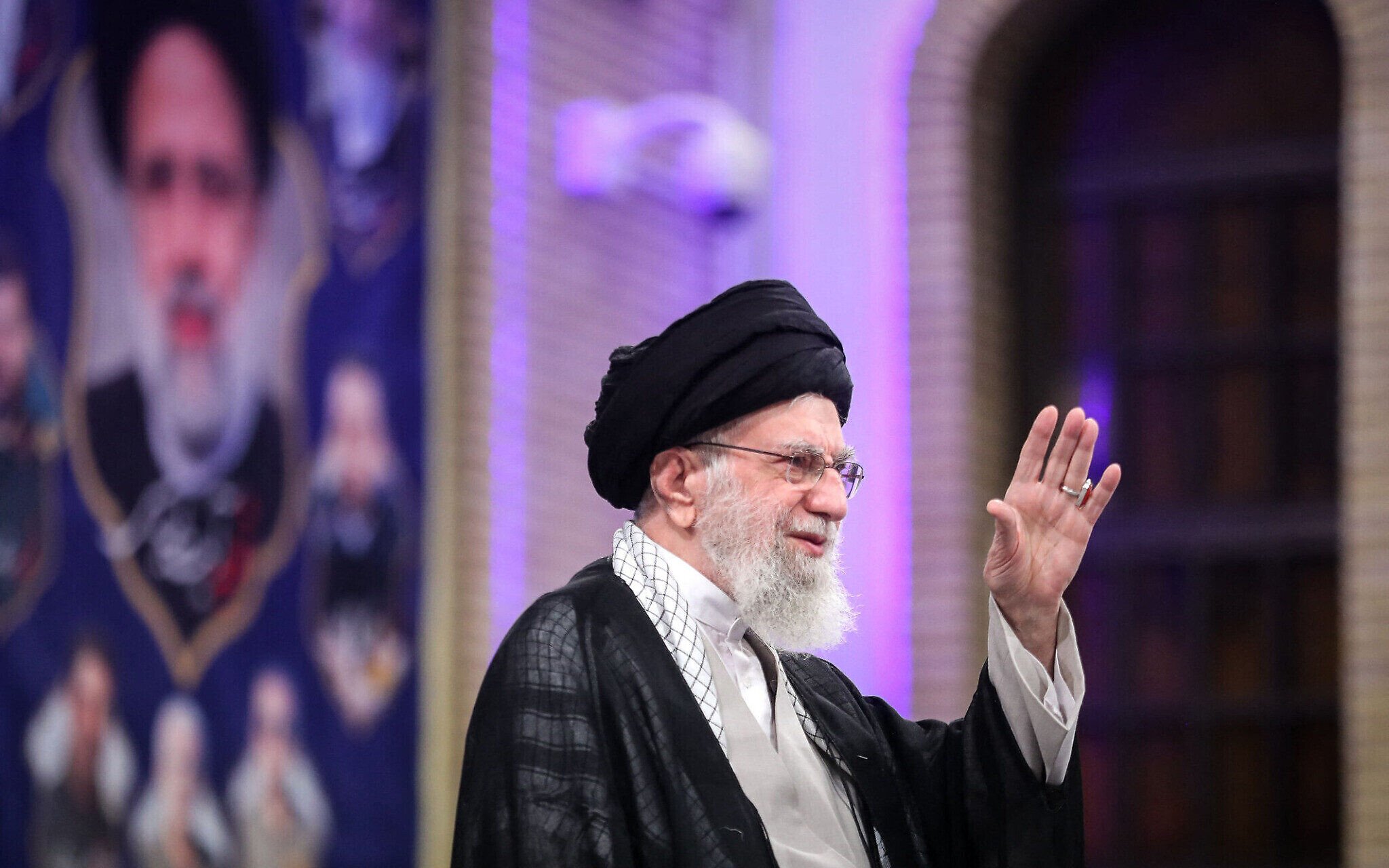
Ayatollah Ali Khamenei has spent almost four decades as Shiite Iran’s supreme leader building a regional power to rival the Sunni states across the Gulf and implacably hostile to the US and Israel — while crushing repeated unrest at home.
At first dismissed as weak and an unlikely successor to the Islamic Republic’s late founder, the charismatic ayatollah Ruhollah Khomeini, Khamenei has steadily tightened his grip to become Iran’s unquestioned decision-maker.
Not even an ayatollah at the time, Khamenei has since lived in the shadow of his mentor, Khomeini. Struggling to impose his religious authority, he has instead built up a formidable security apparatus to extend his power.
Unchallengeable in the office of supreme leader, he has dominated successive elected presidents and promoted nuclear technology that has unnerved the surrounding region.
But ever since the Tehran-backed Hamas terror group attacked Israel on October 7, 2023, Khamenei’s regional influence has been weakening.
Israel has pounded Iran’s proxies — from Hamas in Gaza to Hezbollah in Lebanon, the Houthis in Yemen and militias in Iraq. And Iran’s close ally, Syria’s autocratic president Bashar al-Assad, has been ousted.
Khamenei, 86, has ruled since 1989 and holds ultimate authority over all branches of government, the military and the judiciary. While elected officials manage day-to-day affairs, no major policy — especially one involving the United States — proceeds without his explicit approval.
His leadership style has blended ideological rigidity with strategic pragmatism. He is deeply skeptical of the West, particularly the US, which he accuses of seeking regime change. Yet he has shown a willingness to bend when the survival of the Islamic Republic is at stake.
The concept of “heroic flexibility,” first mentioned by Khamenei in 2013, permits tactical compromises to advance his goals, mirroring Khomeini’s choice in 1988 to embrace a ceasefire after eight years of war with Iraq.
Khamenei’s guarded endorsement of Iran’s 2015 nuclear deal with six world powers was another such moment, as he calculated that sanctions relief was necessary to stabilize the economy and cement his grip on power.
He faced the same dilemma in March, when Trump revealed he had sent Khamenei a letter to discuss a new nuclear pact, and warned of military action if diplomacy failed to curb Tehran’s nuclear ambitions.
Iran insists that its nuclear program is peaceful, although it has been enriching uranium to levels that have no peaceful application, has obstructed international inspectors from checking its nuclear facilities, and has greatly expanded its ballistic missile capabilities.
Trump had quit the 2015 pact during his first term in 2018 and reimposed crippling sanctions on Iran. Tehran reacted by gradually violating all agreed-upon curbs on its nuclear program.
The supreme leader’s reply was typically scathing:
“The enmity from the US and Israel has always been there. They threaten to attack us, which we don’t think is very probable, but if they commit any mischief they will surely receive a strong reciprocal blow,” Khamenei said.
“And if they are thinking of causing sedition inside the country as in past years, the Iranian people themselves will deal with them.”
As the final authority in Iran’s complex system of clerical rule and limited democracy, Khamenei has long sought to ensure that no group, even among his closest allies, musters enough power to challenge him and his anti-US stance.
Because he lacked Khomeini’s religious credentials, he has repeatedly turned to his sophisticated security structure, the hardline Islamic Revolutionary Guard Corps (IRGC) and the Basij, a paramilitary-religious force of hundreds of thousands of volunteers, to snuff out dissent.
His power owes much to the parastatal financial empire known as Setad, worth tens of billions of dollars, which is under Khamenei’s direct control and has grown hugely during his rule.
And billions of dollars have been invested in the Guards for decades to help them empower Shi’ite militias in Iraq, Lebanon and Yemen and prop up Assad in Syria.
It was they who crushed the protests that exploded after Mahmoud Ahmadinejad’s 2009 re-election as president amid allegations of vote fraud. Khamenei had endorsed him, only then to be affronted by the unruly Ahmadinejad’s ambition.
In 2022, Khamenei was just as ruthless in arresting, imprisoning or sometimes executing protesters enraged by the death of the young Iranian-Kurdish woman Mahsa Amini.
Scholars outside Iran paint a picture of a secretive ideologue fearful of betrayal — an anxiety fueled by an assassination attempt in June 1981 that paralyzed his right arm.
Khamenei himself underwent severe torture, according to his official biography, in 1963, when at 24 he served the first of many terms in prison for political activities under the rule of the shah.
After the revolution, as deputy defense minister, Khamenei became close to the Guards during the 1980-88 war with Iraq, which claimed a million lives from both sides.
He won the presidency with Khomeini’s support and was a surprise choice as Khomeini’s successor, given that he lacked both Khomeini’s popular appeal and superior clerical credentials.
Karim Sadjadpour at the Carnegie Endowment for International Peace said “an accident of history” had transformed a “weak president to an initially weak supreme leader to one of the five most powerful Iranians of the last 100 years.”
It is only in the last 18 months that the “Axis of Resistance” that he created to oppose Israeli and US power in the Middle East has begun to unravel.

